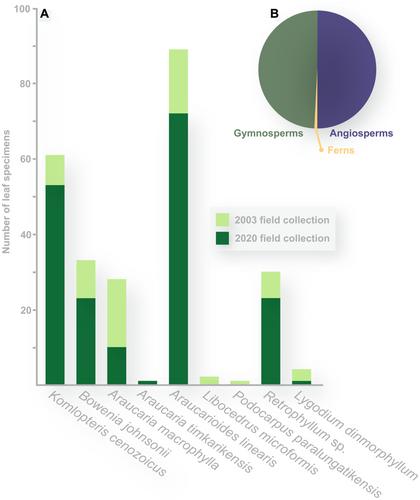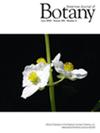The non-flowering plants of a near-polar forest in East Gondwana, Tasmania, Australia, during the Early Eocene Climatic Optimum
Abstract
Premise
The Cenozoic Macquarie Harbour Formation (MHF) hosts one of the oldest and southernmost post-Cretaceous fossil plant assemblages in Australia. Coinciding with the Early Eocene Climatic Optimum (EECO) and predating the breakup of Australia from Antarctica, it offers critical data to study the diversity and extent of the Austral Polar Forest Biome, and the floristic divergence between Australasia and South America resulting from the Gondwana breakup.
Methods
The micromorphology and macromorphology of new fossil plant compressions from the MHF were described and systematically analyzed. Previously published non-flowering plant records were reviewed and revised. Macrofossil abundance data were provided. The flora was compared with other early Paleogene assemblages from across the Southern Hemisphere.
Results
Twelve species of non-flowering plants were identified from the macrofossil record. Conifers include Araucariaceae (Araucaria macrophylla, A. readiae, A. timkarikensis sp. nov., and Araucarioides linearis), Podocarpaceae (Acmopyle glabra, Dacrycarpus mucronatus, Podocarpus paralungatikensis sp. nov., and Retrophyllum sp.), and Cupressaceae (Libocedrus microformis). Dacrycarpus linifolius was designated a junior synonym of D. mucronatus. Further components include a cycad (Bowenia johnsonii, Zamiaceae), a pteridosperm (Komlopteris cenozoicus, Umkomasiaceae), and a fern (Lygodium dinmorphyllum, Schizaeaceae).
Conclusions
The fossil assemblage represents a mixed near-polar forest with a high diversity of conifers. The morphology and preservation of several species indicate adaptations to life at high latitudes. The coexistence of large- and small-leaved conifers implies complex, possibly open forest structures. Comparisons with contemporaneous assemblages from Argentina support a circumpolar biome during the EECO, reaching from southern Australia across Antarctica to southern South America.



 求助内容:
求助内容: 应助结果提醒方式:
应助结果提醒方式:


